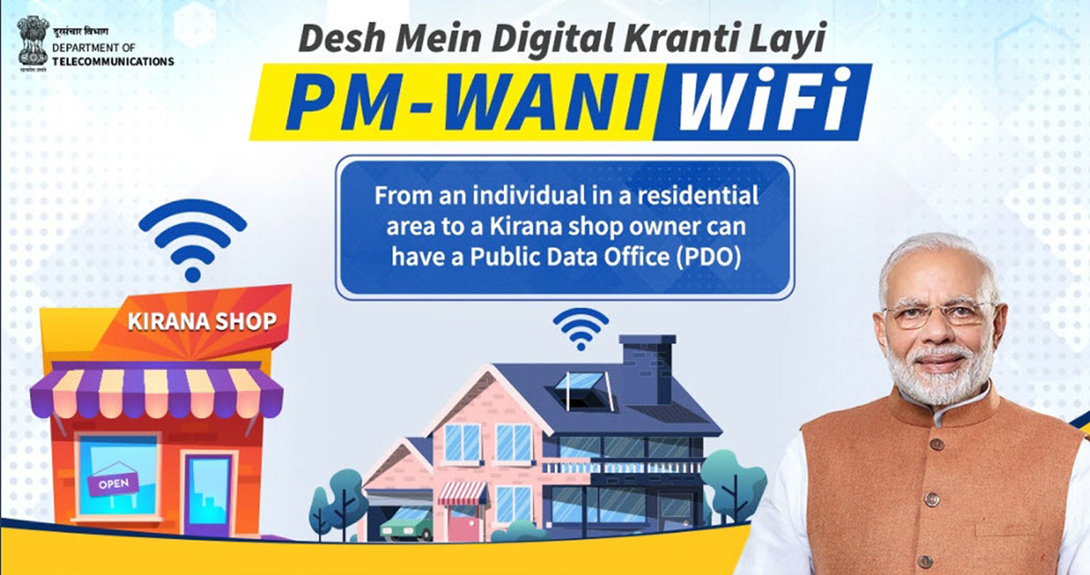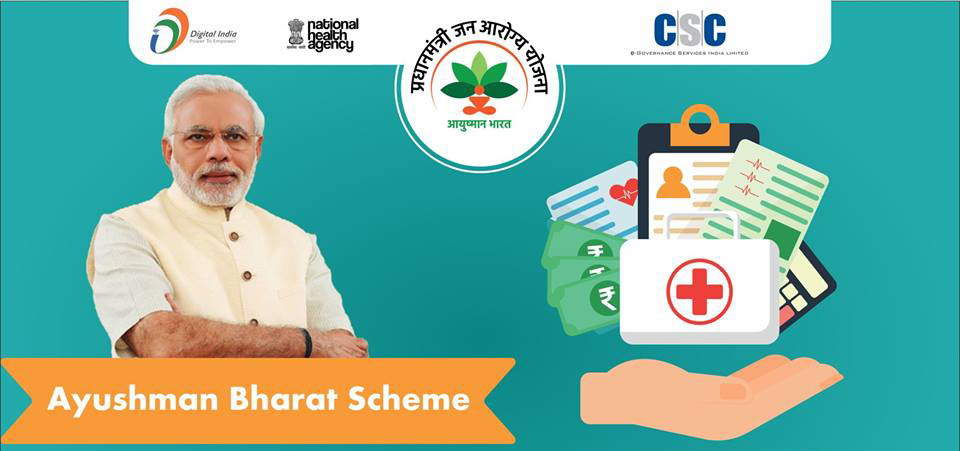Description

Copyright infringement not intended
Picture Courtesy: https://www.thehindu.com/news/national/jal-shakti-ministry-conceives-new-project-to-fix-water-deficit-in-flagship-jal-jeevan-mission/article68332529.ece
Context: The Jal Shakti Ministry will soon announce a "new project" to address the water deficit under the Jal Jeevan Mission.
Details
- Around 15 crore households out of a targeted 19 crore now have tap water connections, but there is still an issue with daily supply. The Union Jal Shakti Minister announced plans to address this, ensuring rural households with taps but no water will soon get access to clean drinking water.
- The Jal Jeevan Mission, with a budget of ₹3.6 lakh crore, was initiated in 2019, to provide tap water to every rural household in India. As of June 25, 2024, the scheme had reached 77% of its target households. However, it is crucial to note that having a tap connection does not guarantee a daily water supply of 55 litres per person.
|
To track progress, the water supply departments of States and Union Territories report the number of households with tap connections to the Jal Shakti Ministry. However, to ensure accuracy, a parallel system has been implemented where villages self-certify if all households within their jurisdiction are receiving tap water. This verification process aims to align the reported figures with the ground reality.
|
Current Status
- According to data on the dedicated portal maintained by the Jal Shakti Ministry, out of the 2,24,678 villages claiming 100% tap connectivity, only 1,21,974 villages have self-certified for tap water connections. There is currently no direct way to determine the number of functional tap water connections out of the claimed total of 19 crore households.
- In light of these challenges, the government is developing a new project to address the issue and ensure that all households with and without tap connections have access to potable water. The aim is to meet the Prime Minister's target within a specific timeframe.
|
The new project is in the initial stage of discussion and there are no details are available in the public.
|
Jal Jeevan Mission (JJM)
- The Jal Jeevan Mission (JJM) is an important initiative of the Government of India aimed at providing Functional Household Tap Connections (FHTCs) to every rural household by the year 2024.
- The primary goal of the Jal Jeevan Mission is to ensure:
- Functional Household Tap Connections (FHTCs): Every rural household should have a tap connection that provides potable drinking water.
- Potable Drinking Water: Ensuring a minimum of 55 litres per person per day (lpcd) of potable water.
- Launch Date: The mission was launched on August 15, 2019.
- Ministry: The mission is overseen by the Ministry of Jal Shakti, which is responsible for formulating policies and coordinating with various stakeholders for its effective implementation.

Components of Jal Jeevan Mission
|
Service Delivery
|
●Functional Household Tap Connections (FHTCs): The mission aims to provide FHTCs to rural households to ensure they have access to safe drinking water.
●Potable Drinking Water: Ensuring that the water supplied through these connections meets the prescribed quality standards for drinking water.
|
|
Sustainability Measures
|
●Groundwater Recharge: Promoting activities that replenish groundwater resources to ensure sustainable water supply.
●Rainwater Harvesting: Encouraging the collection and storage of rainwater for local water supply needs.
●Water Conservation: Promoting efficient water use practices to conserve water resources.
|
Implementation Framework
Central Government Level
- Ministry of Jal Shakti: Formulates policies, provides guidance, and monitors the implementation of the mission through the National Jal Jeevan Mission.
State Government Level
- State Water and Sanitation Mission: Each state has a designated mission responsible for planning, implementing, and monitoring water supply activities under JJM.
- Public Health Engineering Department (PHED): Implements infrastructure development and service delivery related to water supply at the state level.
District Level
- District Water and Sanitation Mission: Coordinates and oversees the implementation of JJM at the district level, ensuring alignment with local needs and conditions.
Village Level
- Village Water and Sanitation Committee (VWSC): Local committees that play a crucial role in planning, implementing, and monitoring water supply activities at the village level.
- Gram Panchayats: Act as grassroots governance bodies, facilitating community participation, and ensuring the sustainability of water supply projects.
|
The implementation of JJM involves a decentralised approach where responsibilities are distributed across various levels of governance. This ensures effective planning, execution, and monitoring of water supply projects, thereby addressing the water accessibility and quality challenges faced by rural communities.
|
Funding Pattern
The funding pattern for the Jal Jeevan Mission (JJM) is structured to support its implementation across different regions and states of India:
- Himalayan & North-Eastern States: These states receive 90% of the funding from the central government, with the remaining 10% contributed by the state governments.
- Other States: For states other than those in the Himalayan and North-Eastern regions, the funding is split equally between the central government (50%) and the state government (50%).
- Union Territories (UTs): UTs receive 100% funding from the central government.
Convergence with Other Schemes
The Jal Jeevan Mission integrates with various related schemes to optimize resources and enhance outcomes:
- Mahatma Gandhi National Rural Employment Guarantee Act (MGNREGA): JJM collaborates with MGNREGA to generate rural employment through the construction of water-related infrastructure.
- Swachh Bharat Mission (SBM): Coordination with SBM aims to improve sanitation and hygiene practices in rural areas, complementing the provision of potable water under JJM.
- Other Related Schemes: The mission synergizes with other relevant schemes to leverage resources and expertise, ensuring comprehensive development in rural water supply and sanitation.
Key Activities
|
Planning and Preparation
|
●Village Action Plans (VAPs): Localised plans developed at the village level to identify water supply needs and prioritise actions.
●District Action Plans (DAPs): Consolidated plans at the district level that integrate VAPs and outline strategies for implementation.
●State Action Plans (SAPs): Comprehensive plans at the state level that coordinate activities, allocate resources, and monitor progress across districts.
|
|
Implementation
|
●Infrastructure Development: Construction and enhancement of infrastructure such as pipelines and water treatment plants to ensure reliable water supply.
●Community Involvement: Engagement of local communities through awareness campaigns, capacity building, and participatory decision-making processes.
●Monitoring and Evaluation
○Regular Reviews: Periodic assessments of project implementation and outcomes to identify challenges and adjust strategies.
○Use of Technology (IoT, GIS): Adoption of advanced technologies like IoT for remote monitoring of infrastructure and GIS for spatial analysis and planning.
○Water Quality Monitoring: Continuous surveillance of water quality parameters to ensure compliance with health and safety standards.
|
Support Activities
- Training Programs for Stakeholders: Conduct training sessions and workshops for local officials, community leaders, and volunteers involved in the implementation and management of water supply projects. This includes technical training on the maintenance of infrastructure, water quality monitoring, and community engagement.
- Awareness Campaigns: Launching campaigns to educate rural communities about the importance of clean drinking water, hygiene practices, and sustainable water management. These campaigns use various media channels to reach a wide audience and promote behaviour change.
- Adoption of Modern Technologies: Integrating advanced technologies such as IoT (Internet of Things), GIS (Geographic Information System), remote sensing, and data analytics for efficient monitoring of water resources, predictive maintenance of infrastructure, and real-time decision-making.
Challenges
- Terrain and Accessibility: Addressing the geographical diversity of rural areas, including remote and hilly regions, which pose challenges for the installation and maintenance of water infrastructure.
- Funding Adequacy: Ensuring sufficient funding for the ambitious targets of providing tap connections to all rural households, especially in states with limited financial resources.
- Contamination and Treatment: Managing water quality to meet drinking standards, addressing issues like microbial contamination, fluoride, arsenic, and salinity in groundwater sources.
- Resource Management: Promoting sustainable water management practices such as rainwater harvesting, groundwater recharge, and watershed management to ensure the long-term availability of water resources.
- Engagement and Empowerment: Encouraging active participation of local communities, especially women, in decision-making processes related to water management. This includes empowering communities to manage and maintain water supply infrastructure.
Outcomes and Impact
- Universal Access: Ensuring every rural household has access to functional tap connections, reducing the burden of fetching water from distant sources and improving convenience and hygiene.
- Disease Prevention: Providing clean drinking water helps in reducing waterborne diseases, improving overall public health outcomes, particularly among children and vulnerable populations.
- Time Savings: Reduced time spent on water collection allows women and girls to pursue education, income-generating activities, and community involvement, leading to improved socioeconomic outcomes.
- Conservation and Recharge: Implementing sustainable practices contributes to conserving water resources, mitigating the impact of climate change, and ensuring long-term water security for rural communities.
Conclusion
- The Jal Jeevan Mission not only focuses on infrastructure development but also emphasizes capacity building, community engagement, and leveraging technology to address challenges and achieve sustainable outcomes. By promoting innovation, empowering communities, and improving water quality and accessibility, the mission aims to bring significant improvements in public health, livelihoods, and overall development in rural India.
Must Read Articles:
JAL JEEVAN MISSION
Source:
The Hindu
Wikipedia
|
PRACTICE QUESTION
Q. How do climate change projections for the Indian subcontinent intersect with current water management practices, and what are the potential consequences for water availability across different regions by 2050?
|











